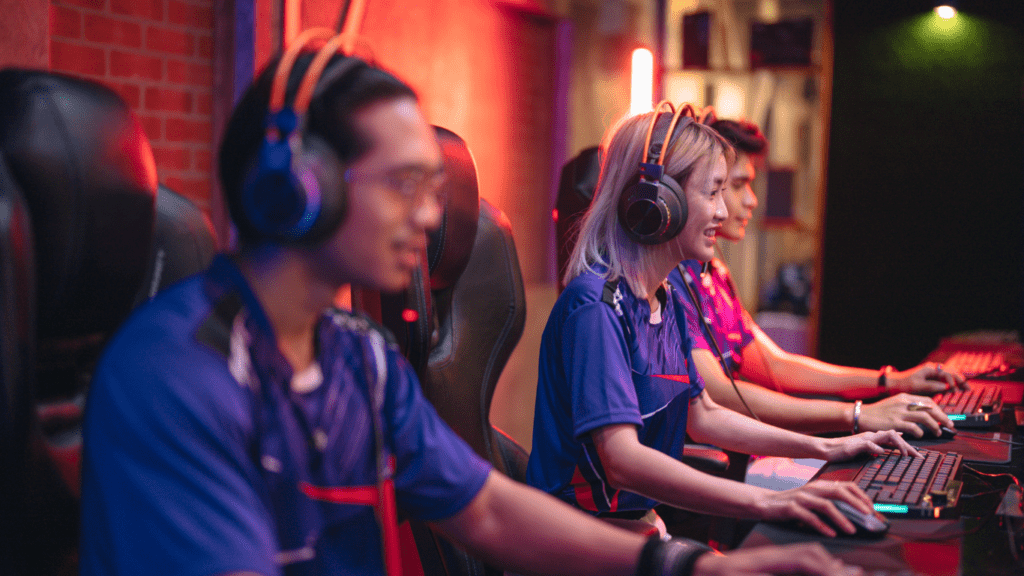The world of esports isn’t just about flashy plays and big prize pools—it’s a relentless grind behind the scenes. Every top team competing in the biggest tournaments has a journey filled with strategy, discipline, and countless hours of preparation. It’s not just about gaming skill; it’s about mental toughness, teamwork, and adapting to ever-changing metas.
The Rise Of Esports And Its Global Impact
Esports has grown from niche communities to a multi-billion-dollar global industry. With a projected revenue of $1.9 billion by 2025, according to Newzoo, the sector is attracting massive investments. Competitive gaming tournaments now fill arenas and draw millions of online viewers, rivaling traditional sports in popularity.
Streaming platforms drive the expansion of esports audiences. Sites like:
- Twitch
- YouTube Gaming
- Facebook Gaming
zxaenable fans worldwide to engage with tournaments, players, and teams in real-time. For example, the 2021 League of Legends World Championship reached over 73 million peak concurrent viewers, showcasing the scale of its audience.
Professionalization significantly boosts esports’ credibility. Partnerships with major brands, endorsements, and structured leagues like Overwatch League and Call of Duty League demonstrate the industry’s increasing legitimacy. Governments in countries like South Korea, the U.S., and China also recognize professional esports players with visas, funding, and national representation.
Cultural crossovers elevate esports further. Collaborations between gaming companies and pop culture icons lead to in-game concerts, limited-edition items, and viral trends. Titles like Fortnite and Valorant serve as platforms for global cultural interaction, bridging gaps between diverse communities.
Esports also influences education and career opportunities. Schools and universities now offer scholarships, degrees, and state-of-the-art training facilities focused on esports. This rapid integration into educational systems highlights its potential long-term value beyond entertainment.
Key Elements Of Preparation For Success

Competing in esports tournaments demands methodical preparation. Teams focus on multiple facets to ensure peak performance on the global stage.
Building The Perfect Team
- Forming a winning team starts with identifying individual strengths.
- Players specializing in roles such as in-game leaders, support, or carry positions bring unique skills essential for synergy.
- I evaluate players not only for mechanical ability but also for communication and adaptability under pressure.
- Compatibility plays a key role—high-performing teams often share clear goals and a unified mindset.
- Coaches and analysts enhance team dynamics. Their data-driven insights on playstyles refine strategies and fill gaps in performance.
- In successful teams like T1 and Fnatic, coaching staff members serve as pivotal contributors to championship runs.
Intensive Practice Regimens
High-performing teams allocate extensive hours to practice. Scrimmages mimic tournament scenarios, allowing players to test strategies and execute coordinated plans. I see many esports professionals practicing 8-12 hours daily, dissecting every match for weaknesses or exploitable patterns.
Replay analysis sharpens game sense. Reviewing past games with actionable conclusions helps identify opponents’ tendencies. For example, adjustments made after analyzing scrims often position teams to exploit rivals’ errors in tournaments.
Mental And Physical Conditioning
Mental toughness underpins consistent results in high-stakes events. I witness teams working with sports psychologists to manage stress and avoid burnout. Techniques like mindfulness training and guided breathing enhance focus during matches.
Physical health complements mental acuity. Professionals avoid injuries such as carpal tunnel syndrome by integrating ergonomic setups and tailored workouts. Nutrition plans designed to optimize energy levels ensure players remain sharp throughout taxing schedules.
The Role Of Technology In Esports Training
Technology has become essential in professional esports, revolutionizing how teams train and compete. Advanced tools and data-driven processes improve precision and maximize player performance.
Cutting-Edge Tools And Software
Teams use advanced software and tools to refine gameplay mechanics. Aim trainers like Aim Lab and Kovaak’s allow players to enhance precision and reaction times in controlled environments. Game-specific replay tools, such as League of Legends’ Pro View or CS:GO demo viewers, let players dissect in-game decisions and mechanics. Performance tracking platforms, including Overwolf and Tracker.gg, provide detailed statistics on individual and team performance, enabling strategic adjustments based on historical data.
Hardware innovations also play a significant role. High-refresh-rate monitors, customizable gaming peripherals, and low-latency internet connections ensure optimized training conditions. Motion capture systems help analyze player posture and ergonomics to reduce the risk of repetitive strain injuries during heavy practice sessions.
Analyzing Opponent Strategies
Data analytics platforms allow teams to gain critical insights into competitors’ playstyles. Services like Mobalytics and DotaBuff aggregate data from previous matches, revealing patterns in team compositions, preferred maps, and win rates. These tools enable coaches and analysts to develop counter-strategies, ensuring preparedness against specific opponents.
Teams also rely on machine learning-driven prediction systems to simulate match outcomes based on various inputs. Scrimmage replays and scouting reports are cross-referenced with live match statistics to strengthen tactical decisions during tournaments. By leveraging this detailed analysis, teams mitigate unpredictability on the competitive stage.





